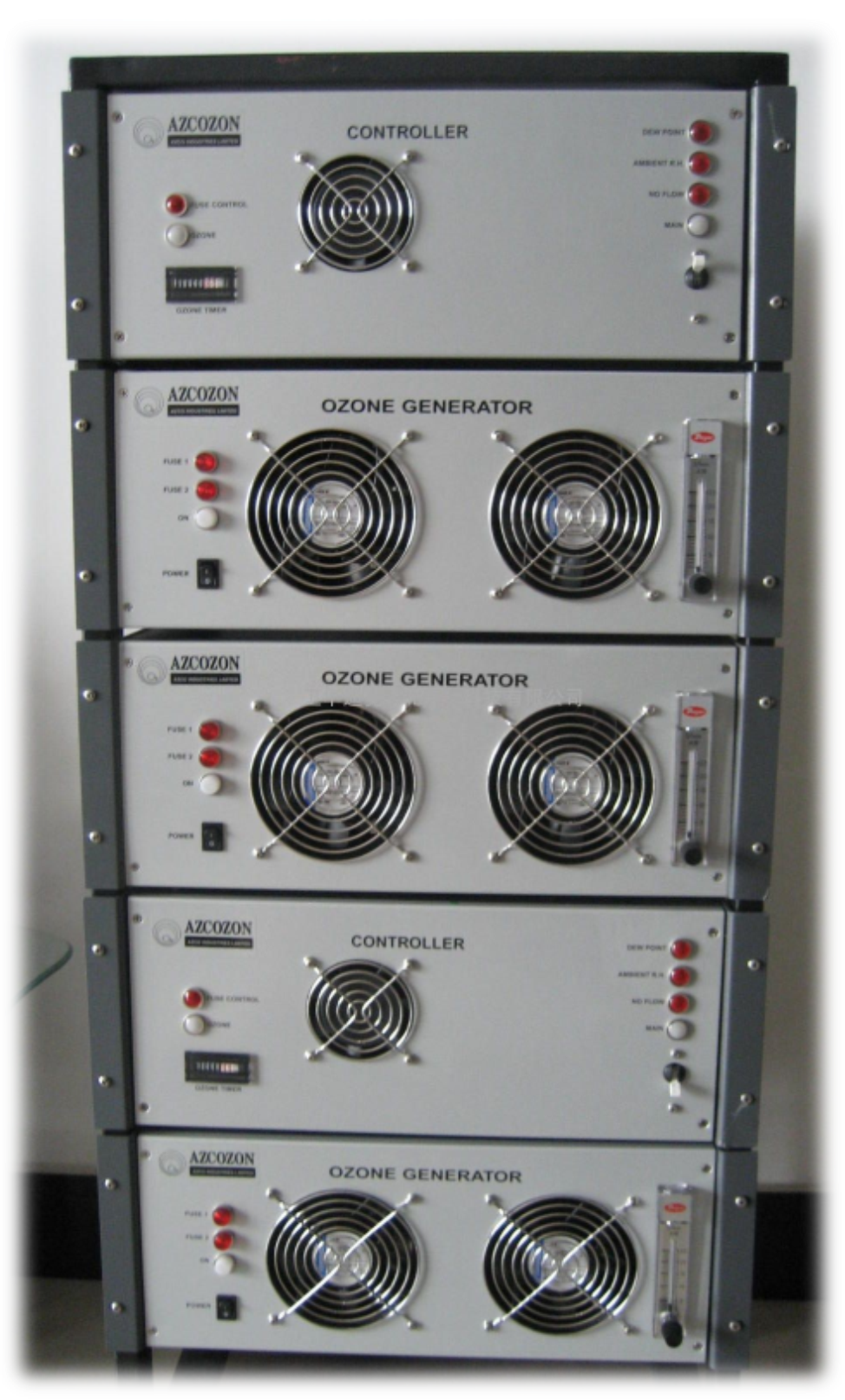Ozonator artificially convert oxygen (O2) to ozone (O3) using an electric discharge field (Corona discharge simulation of the lightning). In general, dry air carrying about 21% oxygen or pure O2 oxygen gas is used as feed gas which is allowed to pass through high voltage discharge tube which converts O2 to O3. The quantity of the ozone output is doubled when oxygen is used as feed in place of dry air to the same size ozonator. Oxygen feed also increases the ozone concentration in the output gas. During this high voltage corona discharge process, heat is evolved so either air or water is used to keep the temperature of the system down. Smaller systems are available in air cool whereas large systems are designed for water cooled operations.
Ozone is a powerful oxidant which can kill most bacteria and microorganisms present in the water. Ozone has a very strong oxidizing power with a short reaction time and additionally help eliminate a wide variety of inorganic, organic chemicals, taste and odor problems, slime growth.
Ozone is effective over a wide pH range and rapidly reacts with bacteria, viruses and protozoans. Ozone has stronger germicidal properties than chlorine and does not create any carcigenic chlorinated disinfection by-products. In bottled water ozonation, the ozone system is controlled to maintain a specific dissolved ozone concentration for a set contact time, which provides a powerful disinfection before the bottling step, treatment, packing and increases its shelf life.
Ozone systems can be used at pre-treatment process steps to assist in removal of iron, manganese, colour, bacteria, taste and odor. Pre-ozonation reduces development of biofilm and ensures the quality of the water and also reduces the maintenance costs of the process equipment. In many cases ozone is used alongside with other techniques, but is always a central treatment and sanitation step to avoid unwanted taste in the final product which will be the case if chemicals such as chlorine are used.

